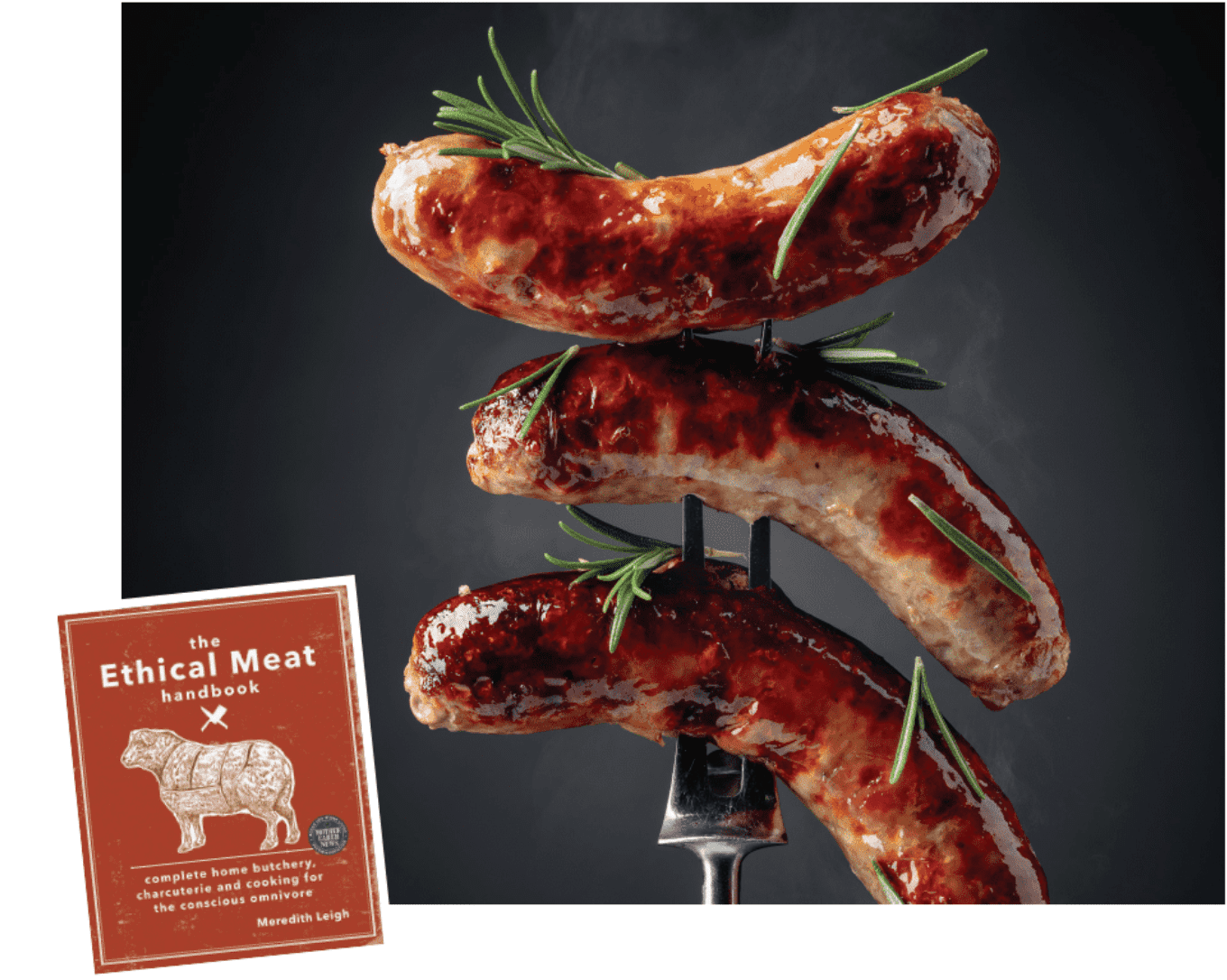
Sausages might be a cookout essential, especially in states like Wisconsin with a long history of German immigration. But for many people, the term “sausage” brings to mind highly processed store-bought products loaded with additives, and meat with murky origins.
That’s exactly what butcher and cooking instructor Meredith Leigh wants to change. “In our culture, sausage has become this byproduct food,” she says.“But it’s this really beautiful, thrifty food that’s been just sort of bastardized by the food processing industry.” For Leigh, author of The Ethical Meat Handbook (New Society Publishers, 2015), sausages offer freedom. “For me, sausage has become a great way to use leftovers,” she says. While a sausage can simply consist of meat, fat, salt, and pepper, Leigh will throw in just about anything. “It’s this way of making your cooking more flexible. If I have a leftover sauce or dressing in my meal, it can become the flavor base for a sausage—the sky is the limit.”
That’s part of the reason you can find varieties of sausage the world over, with distinct traditions, styles, and preferences springing up in cultures across the globe. But despite a level of universality, Leigh says that we’ve become disconnected from our food, where it comes from, how it’s made, and who made it. That’s part of the reason she encourages and teaches people to make sausage at home, ideally grinding their own meat. “A lot of sausages you’re going to buy have a lot of unnecessary additives to make them more shippable, give them a certain color, or more shelf stable, etc.,” Leigh says. “The goal for me is to deal with these things at the home scale and with pure ingredients.”
So yes, you can buy a six-pack of obscurely sourced sausages at the nearest chain grocery, cook them up and throw them in a pasta or salad, and call it a day. But know that there are alternatives, from links made by your local butcher or farm store and the ethically sourced, vegetable-laden links by Seemore Meats & Veggies to signing up for a class with Leigh to learn how to craft your own.
The best part about sausages is that their adaptability invites ingenuity, allowing for a diverse enough range of flavors to never grow boring. But because they’re driven by ground meat, sausage can also be one of the most ethical ways to consume it. Butcher Erika Nakamura argues that ground meat is “the most sustainable” form of meat. “When you go shopping for chops or steaks, it’s very specific,” says Nakamura, co-founder of the small-batch sausage company, J&E SmallGoods. “There are certain cuts that are much more coveted than others, and then there’s the trim, or things that fall to the wayside. Many times, that becomes waste.” When you make sausage, you’re able to save parts of the animal that would otherwise be tossed. “That really is the spirit of sausage,” she says.
Maybe that’s part of the reason so many people have a warped image of sausage in their minds. It’s like the mystery meat we recoiled from in our school cafeteria’s meatloaf, and hey, you know it’s encased in animal intestine, right? But when we make the effort to understand where the ingredients come from, to build a greater appreciation for the hands that brought it to our plates, to seek out farmers and butchers who we can trust instead of relying on vertically-integrated middlemen and corporate overlords … well then maybe we can convince our cringing friends to give sausage its due.
1. BEET SAUSAGE + FETA
Fourth-generation butcher Cara Nicoletti wants people to eat less meat. Her new company, Seemore Meats & Veggies, produces four kinds of sausages that are up to 35 percent vegetables. One of them, La DolceBeet-A, is a pork-based link modeled after sweet finocchiona, a dry Italian sausage that relies on fennel. There’s a grain bowl recipe with crumbled feta on the package, but Nicoletti pictures grilled slices of the bright red links on a cheese board with everything from Brie to a strong hard cheese. Start with feta, a light and salty cheese with a low fat content, to balance out the sausage’s heft and boldness.
2. BEEFY LOVEAGE SAUSAGE + SARVECCHIO
In her online and in-person butchery classes and through her books, Meredith Leigh teaches people how to make sausages at home. One of her recipes uses beef with lacto-fermented lovage stems and red wine. She suggests pairing the homemade sausage with SarVecchio, a nutty and semi-sweet parmesan-style cheese from Wisconsin. “[It’s] something that’s really sharp and dry that’s not going to overwhelm you, but that’s going to cut through the intensity of the sausage,” she says.
3. LAMB MERGUEZ + GRILLED HALLOUMI
Smoky and spicy, merguez is popular in parts of North Africa and the Middle East. At J&E SmallGoods, which she co-owns with her wife, Jocelyn Guest, Erika Nakamura makes it with ground lamb, fresh parsley, and oregano, along with Manzanilla dry sherry. She pairs the sausage with halloumi, a soft cheese that hails from Greece and Cyprus with a high melting point. “Halloumi—especially once its grilled or pan-fried—has a golden brown, delicious edge,” she says. “Unlike other hot cheeses, you’re not losing the integrity of the cheese.”




